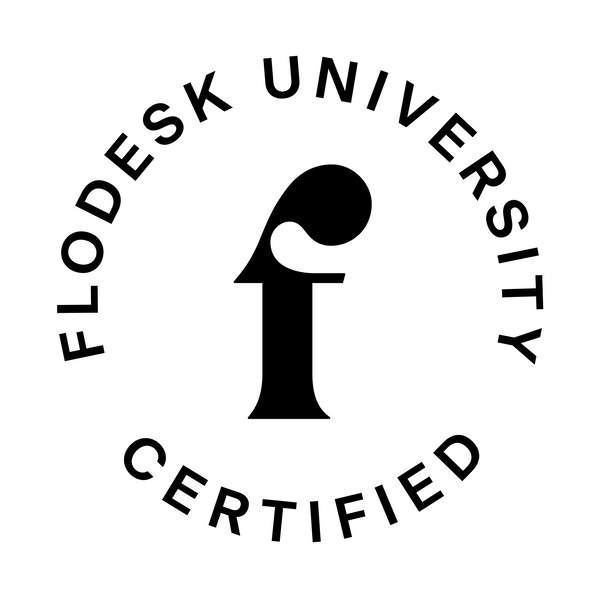How to build an email list without a website
If you’ve been in business long, you may have heard the phrase, “the money is in the list.” It’s telling you the importance of having an email list you can send periodic emails to. But do you know how to build an email list without a website? We’re going to give you 10 ways to do just that.
Why you need an email list
Email marketing is the best way to connect with your customers. Worldwide, there are over 4.1 billion email users. By comparison, if you add the number of users of the top 15 social media platforms, there are 3.96 billion users. Email is 40% more effective at obtaining clients than social media, and emails prompt 3 times more purchases than social media. The average purchase amount is 17% higher.
But the biggest reason you need an email list is simple: it belongs to you. You can market your business on social media all day long, but social media platforms can shut down at any time. You have no control over social media platforms; all your content and contacts could be lost if you’re only using social media to market your business.
Now that you understand why you should build an email list, let’s talk about how to build one without a website.
1. Landing page
A landing page is just that—a simple webpage where your potential clients and leads land after clicking the link you share elsewhere on the internet.
Landing pages vs. websites
What’s the difference between a landing page and a website?
A landing page has one mission, one purpose. That purpose is to get your potential lead to do one thing: either give you their email address, subscribe to something or buy something.
The only goal of lead generation, or opt-in pages is collecting emails in a signup form, so you can add the person to your email list. These pages sometimes offer a lead magnet, like a free ebook or checklist, as a gift in exchange for their contact info.
A Flodesk Full Page Form is the perfect simple landing page for building an email list without a website. You don’t need to know any kind of code to create one. And you can make one easily in a matter of minutes.
A website is a collection of pages with a variety of purposes, such as introducing you to your audience, selling things, hosting a blog and collecting email addresses. It’s a lot more work and takes a lot more time to create and maintain than a landing page.
2. Offer a lead magnet
A lead magnet, is a gift—some say a bribe— you give a potential lead in exchange for their email address. In Flodesk, to send a lead magnet email or a welcome sequence when you’ve moved your new subscriber into the segment attached to your form, you can either link directly to it or set up a workflow. Here are some different types of lead magnets you can offer:
A guide or report
Guides and reports are among the most common lead magnets offered. Guides and reports should be somewhat short and specific. They should be a pure value add for your email subscribers. A four page guide on container gardening? Yes. A month-long email marketing sequence on how to use your products or services? Not so much.
A cheat sheet or handout
Shorter than guides and reports, cheat sheets and handouts are no less impactful. They’re often ultra-specific: a checklist for more productive meetings, a cheat sheet for finding the perfect shade of foundation or a handout about weatherproofing your car for winter.
A toolkit or resource
A toolkit or resource is a collection of related materials, delivered simultaneously. Think of your toolkit at home with its screwdrivers, hammer, pliers and wrenches. You could deliver a set of templates for easily creating graphics in Canva, a series of checklists for new homeowners or an index of resources for preschoolers in your geographic area.
A video training
If you have the skills and the ability to create a decent looking end result, a video training can be a powerful tool in your freebie toolkit. You could give a demonstration of how to apply makeup, teach someone how to prepare a recipe or show the world, once and for all, how to fold a fitted sheet. (One of you has to know—save the rest of us!)
3. Social media
While social media shouldn’t be the only place you’re marketing your business, it's still a key part of how to build an email list without a website. Social media posts on all four platforms can build your social proof, your authority and your credibility as an expert in your niche. Today, we’re going to talk about four of the biggest social media platforms: Facebook, Pinterest, Instagram and LinkedIn.
Facebook
There are many different ways to use your Facebook account. You’ve got your personal profile, maybe a business page and, whether you have one of your own or not, you probably participate in Facebook groups. You can also run Facebook ads targeting your ideal client avatar. In all areas of Facebook make sure you post follow up comments to any comments your potential customers make.
Your Facebook profile
This is where everyone starts on Facebook. Even though only 6% of your friends list will see your Facebook posts, you want to post regularly anyway. You’re posting to establish that you know what you’re talking about. To show your experience. And to condition prospects to seeing your name.
Your Facebook page
There are several reasons why you want to use a Facebook business page to help you build an email list without a website, not the least of which is to learn more about your target audience. Facebook Insights show you all the data you’ll ever need about who’s viewing and using your page. And you can get an SEO (search engine optimization) bump from using a business page.
Your Facebook group
Facebook groups are a chance to build a real community of your loyal, raving fans. They’re where you have great discussions, share awesome memes, provide info about your products and services, dole out exclusive knowledge and fall in love with the people who love your company as much as you do. Bonus—you’ll improve your organic reach, because Facebook’s algorithm is currently set up to promote content from groups.
Facebook ads
There are two great reasons to use Facebook ads. First, it's simple to use Facebook advertising. The platform makes it as easy as possible to entice you to use this feature. Second, everybody has a Facebook account. There are approximately 2.85 billion monthly Facebook users, so your ideal client avatar is out there, seeing all kinds of ads. Why not spend money to let them see yours?
Pinterest
While Pinterest isn’t a social media platform per se—it’s actually a search engine—it has enough similarities to social media platforms for us to include it in this list. You can quickly and easily create pins to share on a website like Canva to pin content you’ve created around the web, e.g. on Skillshare, Medium, LinkedIn or Facebook.
With attractive, eye-catching pins and solid, valuable content, your pins stand a good chance of being repinned by others who are searching for the exact content you’re offering. And when you convert to a business account, you have access to analytics to see how your pins are performing.
Instagram
Using Instagram for business is an excellent way to drive traffic to your landing page, or to simply offer products and services from your Instagram page. Use Stories, Reels, Lives, IGTV and Carousels to promote your products and services, with a call to action to capture your customers’ email addresses. Make sure you put your landing page link in your bio.
LinkedIn
Think of LinkedIn as Facebook for professionals. They share many of the same features: a newsfeed, private messaging and groups. LinkedIn is also a great place for you to share content like blog posts or long form articles. The more high-value content you add to your LinkedIn Activity, the more you will build your authority and demonstrate your expertise in your niche.
4. Personal contacts
Another way to build an email list without a website is to ask your personal contacts if they’d like to join your email list. Send your contacts a quick message to tell them you’re building an email list and explain why they’d want to join. You can also ask if they’d share your landing page link with their contacts who might benefit from what you’re sending.
5. Referral programs
One of the most impactful ways of building your email marketing list is when your subscribers tell their friends about your list, and recommend they subscribe. An easy way to encourage this is to start a referral program.
A referral program doesn’t have to be complicated. You can offer an extra freebie, a discount on a future purchase, or a special offer to the people on your list who share your signup form with their friends.
As an example, Dropbox did a referral program that worked so well they grew from 100,000 users to 4,000,000 users in just 15 months. They offered 500 MB of free storage for every person their users referred, up to 16 GB total.
Some tips on how they maximized opportunities for users to refer friends:
They built the referral program into their onboarding process. The last step of their onboarding was “Invite some friends to join Dropbox.” You can do this in your Flodesk Workflow with the onboarding emails you send.
They explained the referral program in terms of the benefit to the referrer. It was marketed as “get more space,” instead of “refer some friends.”
They made it easy to invite friends by either using a referral email, importing email contacts or posting links to social media.
6. Guest blog posting
Guest blog posting is another great way to put yourself in front of large audiences if you guest blog post on the right blogs. And with guest posting, you can almost always include a link to your own product or service in the post itself or in your author bio. That lets you leverage each guest post to grow your list.
Finding guest posting opportunities
Check your favorite blogs in your niche. Read author bylines to see if they are guest posts, or reach out to the blog owner to ask if they accept guest posts.
Use your favorite search engine to search for “guest posts,” “submissions” or “write for us” + your niche.
Pitch guest posts to blogs your target customer would read. For example, if your ideal customer is a stay at home mom, you’d want to target mommy blogs.
How to pitch guest blog posts
The biggest problem to overcome in pitching guest blog posts is that blog owners get a ton of spammy pitches. You need to make sure the post you’re pitching gives real value to the blog readers.
In your pitch, make sure you:
Follow the submission guidelines. Not doing so is an easy way to get bounced from consideration.
Get the blog and blog owner’s names right. Don’t just copy and paste a generic letter; you want them to feel acknowledged and appreciated.
Include a sentence or two about you and your business.
Include a well-thought-out headline and bullet point outline of the article you’re proposing to write.
7. Appearing on a podcast
Being a guest on a podcast is a great way to build your audience and build your email marketing list without a website. It also takes a lot less effort than guest blogging. It doesn’t matter what your niche is, somebody’s created a podcast for it.
Getting a guest spot on a podcast episode is similar to getting a guest post spot on a popular blog. You’ll want to listen to at least one episode to get a feel for the podcast and its host. Make a list of the questions the host asks to make sure you have solid answers for them. Once you’re sure you’d be a good fit, send in your pitch.
Your pitch should include a couple sentences to establish your expertise in your field, info about what you want to discuss on the show, and an explanation of what makes you stand out from the crowd.
8. Medium
You don’t need a website to build a body of content demonstrating your expertise in your field. You can post articles on Medium, just like you would any blog post. Having that portfolio can be a key component in building an email list without a website. A Medium post can send new subscribers to your signup form.
Think of Medium like a big magazine that houses several smaller magazines. It has unique algorithms that help users curate a variety of stories based on their stated interests. Users even get tailored email roundups of the latest articles they might enjoy. This gives you access to a huge number of targeted readers.
9. Quora
Quora is a question and answer site where people go to find a variety of information. Each piece of content is created by the site’s users. Everything is generated, edited and sorted by the people who use the site. What does this mean for you? Your audience is on Quora, asking questions you can answer as an expert in your field.
Create a solid free account profile that includes your CTA—a link to your landing page. Start answering questions with lots of followers and few or badly written answers. After you’ve crafted a well-written answer, add a signature that includes your landing page address.
10. SlideShare
Slideshare is a learning platform owned by LinkedIn. SlideShare lets you create content like slideshows, infographics and other files to a large, professional audience. It’s an excellent way to build your credibility as a subject-matter expert and parlay that into building an email list without a website.
Some benefits of using SlideShare include:
Getting your content in front of a huge professional audience.
You have free access, and so does your audience.
It includes analytics so you can see how often each upload is seen, shared, liked, commented on or downloaded in a given timeframe.
How to build an email list without a website using Flodesk
Many people don't realize you can use Flodesk without a website. We have a Full Page Form that can act as a landing page for you to use. You’re going to leverage the power of that form to start building your email marketing list in just a few days.
You'll start by clicking on Forms, then New Form. Scroll down to select Full Page on the left, then hover over the thumbnail to begin customizing it.
The power of list-building is segmentation, which makes your audience feel like you're speaking directly to them. People who opt in will automatically be added to the segments you choose or create below. To choose segments, click the drop down arrow and select one, or start typing to create a new one.
It’s essential to customize your emails and forms to fit your branding. To customize your text, click on Text, which opens a customization panel on the right. You can feel free to customize everything. Click on the gray area to upload an image.
You can choose whether to use double opt-in or not, and you can customize that double opt-in message. There’s an option to choose whether to receive an email every time someone opts into the form. After the form is submitted, you can choose whether to show a success message or redirect your new lead to a URL like a Dropbox or Google Drive link for a freebie delivery. You can also deliver freebies by setting up a workflow.
When you hover over the form, you can copy the URL of your new landing page so you can share it all over the place.
A few tips:
When you share your link on Facebook, the default image is Flodesk, not your chosen image. Close the preview image and upload your own to drive traffic to your page.
You could also use a site like Bit.ly to shorten the link. if you log in to Bit.ly you can also customize the shortened link.
You can buy a custom domain from a site like GoDaddy and redirect it to your Flodesk page.
You can link to your Flodesk form with Linktree.
FAQ
Can you have an email list without a website?
There are numerous ways to build an email list without having a website. You can use a landing page, social media, personal contacts, referrals, guest blog posts, podcast appearances, Medium, Quora and SlideShare—just to name a few ideas—to collect email addresses. You may want to have a website at some point in time, but you can absolutely build an email list without a website.
How can you do email marketing without a website?
You can use Flodesk’s Email Builder to create emails to send out to your segments of subscribers. You can use those emails to drive traffic to your social media, blog posts, Medium, Quora or SlideShare.
You can take advantage of the extensive email analytics to track how well your emails are doing. You’ll see things like how many emails were sent, delivered, opened and had links clicked. And to make sure you get as many opens and clicks as possible, we give you full creative control over your emails and an easier way to create and send email.
We told you above that the money is in the list. Hopefully now you’re bursting with ideas on how to build that email list without a website.










